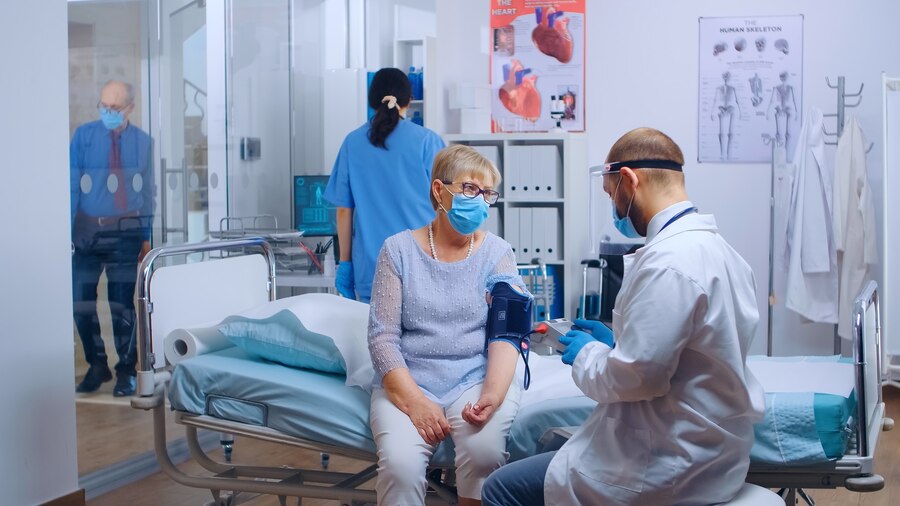The structure of a hospital is the backbone of its functionality, determining how efficiently healthcare professionals can provide care and how comfortably patients can recover. Among the many components of hospital infrastructure, bed arrangements play a pivotal role in ensuring optimal patient care, comfort, and safety. Patient hospital structure and bed arrangements: optimizing healthcare for quality and comfort? This article delves into the significance of hospital design, focusing on patient-centric spaces, structural planning, and the evolving role of hospital beds in modern healthcare systems.
The Foundation of Hospital Structures
A hospital’s structure is a sophisticated interplay of design and functionality. From emergency rooms and operating theaters to recovery wards and outpatient clinics, each area is meticulously planned to meet the diverse needs of patients, staff, and visitors. Key considerations in hospital design include:
- Zoning for Efficiency:
Hospitals are typically divided into functional zones to streamline operations. These zones include critical areas (such as ICUs and operating rooms), semi-critical areas (such as recovery wards), and non-critical zones (like administrative offices and waiting areas). Proper zoning minimizes the time required to transport patients or medical supplies, thereby improving efficiency. - Infection Control Measures:
Hospital design must prioritize infection prevention. Features such as negative-pressure isolation rooms, separate entrances for infectious disease patients, and high-efficiency particulate air (HEPA) filtration systems are integral to curbing the spread of pathogens. - Accessibility and Inclusivity:
Hospitals must cater to diverse patient demographics, including individuals with disabilities, the elderly, and children. Wide corridors, wheelchair ramps, elevators, and tactile pathways ensure accessibility for all. - Sustainability in Design:
Modern hospitals often incorporate eco-friendly practices. Green roofs, solar panels, and energy-efficient HVAC systems reduce environmental impact while lowering operational costs.
Patient Rooms: The Core of Care Delivery
The design of patient rooms directly influences recovery outcomes. Patient-centered care is at the forefront of modern hospital architecture, ensuring that rooms are equipped to provide physical comfort, emotional support, and clinical safety.
Types of Patient Rooms
- Private Rooms:
Private rooms offer a solitary space for patients, ensuring privacy, reduced infection risk, and personalized care. They are particularly beneficial for patients requiring long-term stays or those undergoing sensitive treatments. - Semi-Private Rooms:
These rooms accommodate two patients, separated by a curtain or partition. They balance privacy with cost-effectiveness, making them a common choice in many hospitals. - Open Wards:
Open wards with multiple beds in a shared space are cost-efficient and suitable for patients with less critical conditions. However, they may lack privacy and pose a higher risk of infection spread. - Specialized Rooms:
Hospitals also have specialized rooms, such as maternity suites, pediatric units, and palliative care rooms, designed to cater to specific patient needs.
Hospital Beds: More Than Just Furniture
Hospital beds are critical to patient care, offering far more than a surface to rest on. They are engineered to enhance comfort, facilitate medical procedures, and improve safety.
Evolution of Hospital Beds
The evolution of hospital beds mirrors advancements in medical technology and patient care. Early hospital beds were basic cots with minimal adjustments. Modern beds, however, are sophisticated devices equipped with features like adjustable height, electronic controls, and pressure-relief mattresses.
Types of Hospital Beds
- Manual Beds:
These beds require manual adjustments for height, headrest, or footrest positioning. They are cost-effective but less convenient than their electronic counterparts. - Semi-Electric Beds:
A hybrid model, these beds allow electronic adjustments for certain functions while others are manual. They strike a balance between affordability and convenience. - Fully Electric Beds:
Fully electric beds offer maximum functionality with minimal effort. They are controlled via remote or panel, allowing patients and caregivers to make precise adjustments. - ICU Beds:
ICU beds are designed for critically ill patients. They often include advanced features such as integrated weighing scales, heart monitoring systems, and side rail controls. - Bariatric Beds:
These beds are specifically designed for obese patients, with reinforced frames and larger dimensions to ensure safety and comfort.
Key Features of Modern Hospital Beds
Modern hospital beds are equipped with a range of features to improve patient care:
- Adjustable Positions: Elevating the head or foot of the bed aids in respiratory support, reduces pressure on certain body areas, and enhances comfort.
- Safety Rails: Side rails prevent falls and provide support for patients while moving in bed.
- Pressure-Relief Mattresses: Advanced mattresses reduce the risk of pressure ulcers, especially for immobile patients.
- Integrated Monitoring Systems: Some beds are equipped with sensors to monitor vital signs or detect patient movements, alerting staff in case of emergencies.
- Mobility Features: Wheels, braking systems, and adjustable heights facilitate easy movement and access for caregivers.
Optimizing Bed Arrangements in Hospitals
The layout and arrangement of hospital beds significantly impact patient care and staff efficiency. Key factors to consider include:
- Spacing and Accessibility:
Adequate spacing between beds ensures patient privacy, reduces the risk of cross-contamination, and allows staff to access patients without obstruction. - Alignment with Patient Flow:
Beds should be positioned to align with the natural flow of patients and staff, ensuring seamless movement within the ward. - Infection Control:
Bed arrangements should facilitate effective cleaning and disinfection. Isolation beds should be located in separate areas to prevent the spread of infectious diseases. - Emergency Preparedness:
Beds in critical care areas must be positioned to allow rapid access to emergency equipment and clear evacuation routes.
The Role of Technology in Bed Management
Technology plays a crucial role in optimizing bed management within hospitals. Digital bed management systems provide real-time updates on bed availability, patient occupancy, and maintenance schedules. These systems streamline hospital operations, reduce patient wait times, and enhance overall efficiency.
Telemedicine Integration
In the age of digital healthcare, hospital beds are increasingly integrated with telemedicine systems. These enable remote consultations, real-time monitoring, and virtual rounds, minimizing the need for patient transfers and maximizing care delivery.
Future Trends in Hospital Beds and Patient Structures
Hospital bed furniture near me? The future of hospital infrastructure lies in smart designs and technological innovations:
- Smart Beds: AI-powered beds capable of monitoring patient health, adjusting automatically for optimal comfort, and alerting caregivers in emergencies are on the rise.
- Modular Hospital Designs: Modular structures allow hospitals to scale up or down based on demand, ensuring flexibility during pandemics or natural disasters.
- Sustainability Initiatives: Green building practices, including energy-efficient lighting and recycled materials, will continue to shape hospital designs.
- Patient-Centered Spaces: Future hospitals will prioritize patient well-being with features like natural lighting, noise-reducing materials, and calming interiors.
Conclusion
At Penta Surgicals, the structure of a hospital and its bed arrangements are integral to delivering quality healthcare. From the architectural design of patient rooms to the technological advancements in hospital beds, every aspect contributes to enhancing patient outcomes and operational efficiency. As healthcare systems evolve, embracing innovative designs and technologies will be key to creating hospitals that are not only centers of healing but also havens of comfort and care.





